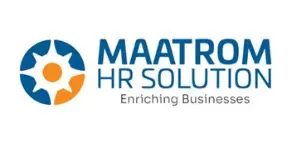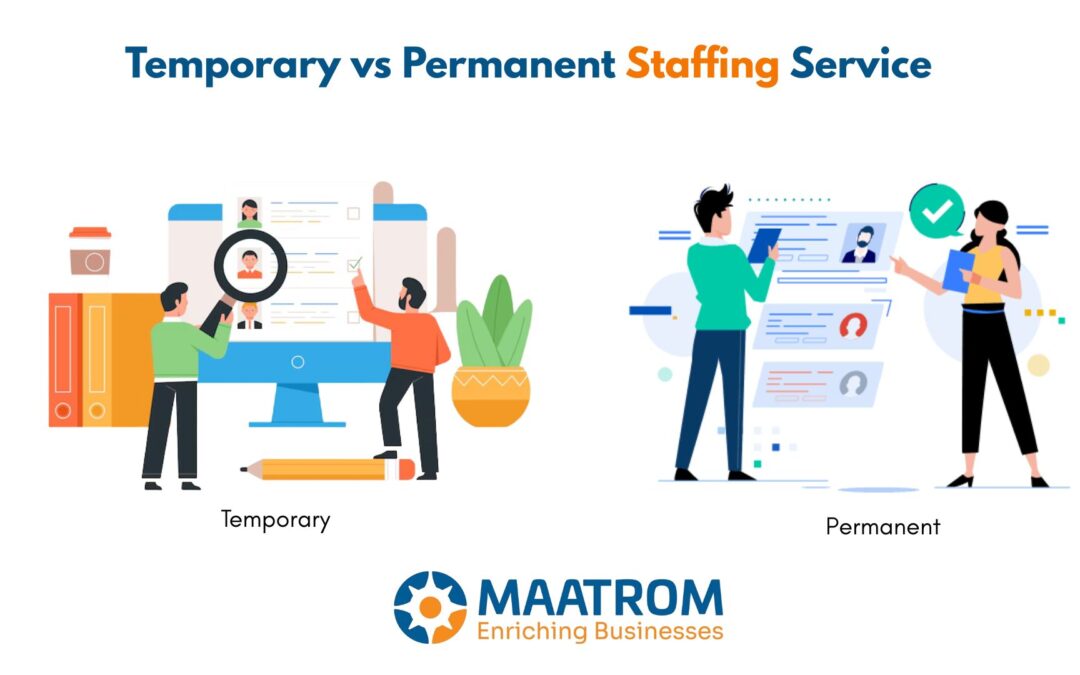Temporary vs. Permanent Staffing – Which is Right for You?
Staffing decisions are rarely just about filling a seat. They shape how resilient, innovative, and competitive an organization can be in the long run.
But here’s the dilemma: should you go with temporary staff, who offer flexibility and specialized expertise, or should you invest in permanent hires, who anchor stability and culture?
The answer isn’t one-size-fits-all. The choice depends on your growth stage, industry dynamics, budget, and the type of work at hand. Let’s dive into this decision with fresh lenses.
The Changing Nature of Work
The debate between temporary and permanent staffing has intensified in the last decade because the very nature of work has changed.
- Projects are shorter, more agile, and tech-driven.
- Talent is distributed across geographies.
- Organizations face unpredictable demand spikes.
According to a 2025 Deloitte Workforce Trends report, nearly 47% of companies now rely on a mix of permanent and temporary staff, compared to just 23% in 2015. The “blended workforce” is no longer an experiment, it’s indeed the norm.
Understanding Temporary Staffing
Temporary staffing involves hiring employees for a fixed period or project. This could be through a staffing agency or direct contracts.
Advantages
- Flexibility – Scale up or down quickly based on workload.
- Specialized Skills – Access niche expertise without long-term commitments.
- Cost Savings – Avoid full benefits and long-term liabilities.
- Trial Runs – Evaluate potential permanent hires via temp-to-perm models.
Limitations
- Cultural Disconnect – Temps may not fully integrate with your team.
- Knowledge Drain – Expertise leaves once the contract ends.
- Higher Hourly Rates – While cheaper in benefits, per-hour costs may be higher.
Best Use Cases
- Seasonal industries (e.g., retail during holidays).
- Projects with clear start and end dates (e.g., IT migrations).
- Startups handling unpredictable workloads.
Understanding Permanent Staffing
Permanent staffing means employees are hired on a long-term basis, becoming part of the organization’s backbone.
Advantages
- Stability – Lower turnover, more continuity in processes.
- Cultural Alignment – Employees align with vision, values, and long-term goals.
- Talent Development – You can invest in upskilling and career growth.
- Ownership & Loyalty – Stronger accountability towards organizational outcomes.
Limitations
- High Fixed Costs – Salaries, benefits, compliance, and training.
- Longer Hiring Cycles – Permanent roles take more time to fill.
- Flexibility Challenges – Harder to scale down in downturns.
Best Use Cases
- Core business functions (finance, strategy, operations).
- Roles that require long-term ownership (leadership, R&D).
- Industries with low seasonality and predictable demand.
The Hidden Costs Are Not Just About Salaries
Do you know where most leaders trip up? They look only at headline salaries. But staffing decisions carry hidden costs that impact ROI:
- Onboarding & Training: Permanent hires demand structured onboarding but temps need quick ramp-ups.
- Turnover Impact: Replacing a permanent hire can cost up to 1.5–2x their salary (SHRM).
- Compliance Risks: Misclassifying temporary workers can result in fines.
- Knowledge Retention: Permanent staff hold institutional knowledge but temps often take it away.
Now the real question is, which cost are you willing to carry? A higher upfront fixed cost, or the hidden costs of turnover and reintegration?
The “Core vs. Edge” Framework As Out-of-the-Box Lens
One powerful way to decide is to think in terms of Core vs. Edge roles.
- Core Roles → Directly tied to your business identity and long-term growth. These should be permanent.
- Edge Roles → Project-based, tactical, or experimental. These can be temporary.
Example:
A hospital will keep surgeons and nurses permanent (core), but may bring in temporary specialists for a vaccination drive (edge).
A software company may retain permanent product managers (core) but hire temporary data scientists for a one-off AI project (edge).
This framework helps leaders avoid over-committing while ensuring the heart of the business remains protected.
Why The Hybrid Approach Works Best of Both Worlds?
In reality, most organizations thrive on a hybrid model.
1. Temp-to-Perm Pipelines
Hire temps for short-term projects but convert the best into permanent staff once trust is built. This reduces hiring risks.
2. Projectized Staffing
Treat every initiative as a project with blended teams as permanent employees for continuity and temps for speed and expertise.
3. Strategic Outsourcing
Outsource edge functions (e.g., payroll, IT support) while keeping strategic functions in-house.
4. Workforce Analytics
Use HR tech tools to forecast when you’ll need flexibility vs. stability. According to Gartner (2025), companies using workforce analytics reduce underutilization costs by 27%.
Questions Leaders Should Ask
Before deciding, leaders should ask:
- Is this role core to our business identity?
- Does the workload fluctuate significantly?
- What risks matter more, financial rigidity or knowledge loss?
- How do staffing choices affect culture and morale?
- Do we have analytics to forecast workforce needs?
The Future of Staffing Will Be Fluid Workforce
The future may not be “temp vs. perm” at all. It may be fluid.
With platforms like Upwork, Toptal, and enterprise talent clouds, companies increasingly tap into on-demand talent pools. By 2030, McKinsey predicts that half of Fortune 500 workforces will operate in hybrid, fluid models, a mix of permanent anchors and project-based experts.
Conclusion
Temporary staffing offers agility. Permanent staffing offers stability. The smartest organizations stop treating it as a binary choice. They build a workforce portfolio, just like an investment portfolio by balancing flexibility, cost, and long-term resilience. The right question is not “Which is better?” but Which mix serves our business goals today and tomorrow?


Recent Comments